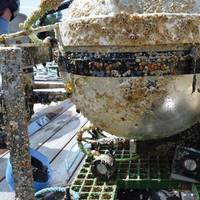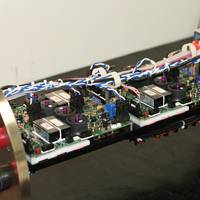Interview: Dr. Catherine Warner, Director, NATO CMRE

At CMRE, it’s not just about the science. It’s about building trust and confidence in resilient systems. An interview with Dr. Catherine Warner, Director, NATO Center for Maritime Research and Experimentation, La Spezia, ItalyTell us a little about yourself and CMRE. What does CMRE do, and how do you see your mission evolving?I came here from the Pentagon, where I was the science advisor for the director of operational test and evaluation. My experience has been working with operators on systems that they’re getting ready to field.
Biofouling Foiled: UV Light Harnessed for Biofouling Control

Since the first deployment of in-situ monitoring instrumentation, biofouling has been a problem. Without an effective solution, people have historically had to accept the limits biofouling imposes on ocean sensing work, with significant repercussions. When instrumentation is deployed in-situ, the value of the data taken during the deployment corresponds with the longevity: information gleaned from a longer deployment is often more useful than information from one of a shorter term.
American Climate Project Invests in Kongsberg Technology

Following a contract signed on May 15, 2013, echosounders from Kongsberg will play a part in the American Ocean Observatories Initiative (OOI), for the monitoring of subsea life along both U.S. coasts. OOI is a cable-based array of scientific sensors designed to monitor the marine habitat. Everything from fish and plant life, to chemical, physical and geological changes will be measured. “Given the global climate changes, it is vital for researchers to learn as much as possible about ocean life and any changes that are taking place.
Ocean Works Helps Increase VENUS Ocean Observatory Capability

OceanWorks International has produced the SIIM-375, a mini-Node variant of the Subsea Instrument Interface Module (SIIM) for the VENUS observatory. VENUS, the coastal network of the Ocean Networks Canada (ONC) Observatory, is a cabled undersea laboratory for ocean researchers and explorers. VENUS delivers real time information from seafloor instruments via fibre optic cables to the University of Victoria in British Columbia, Canada. VENUS is one of the 4 Seafloor Networks around the world in which OceanWorks has deployed its world-leading Seafloor Networks technology.
Seafloor Observatory Gets $20m
The research capacity of the University of Victoria-led NEPTUNE Canada, the world’s first regional cabled ocean observatory, received a significant boost today with the announcement of an additional $20 million in funding. The $8 million from the Canada Foundation for Innovation (CFI), $8 million from the BC Knowledge Development Fund (BCKDF) and $4 million of in-kind support from private partners including Alcatel will allow scientists to significantly expand the scope and scientific impact of the NEPTUNE Canada observatory. Beginning in fall 2007, Alcatel will lay an 800-km network of powered fibre optic cable across the seafloor in the deep ocean off the B.C. coast.





